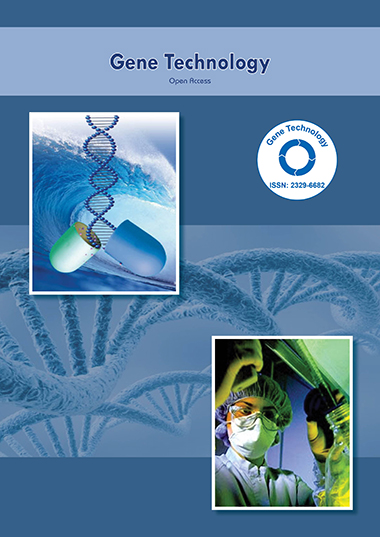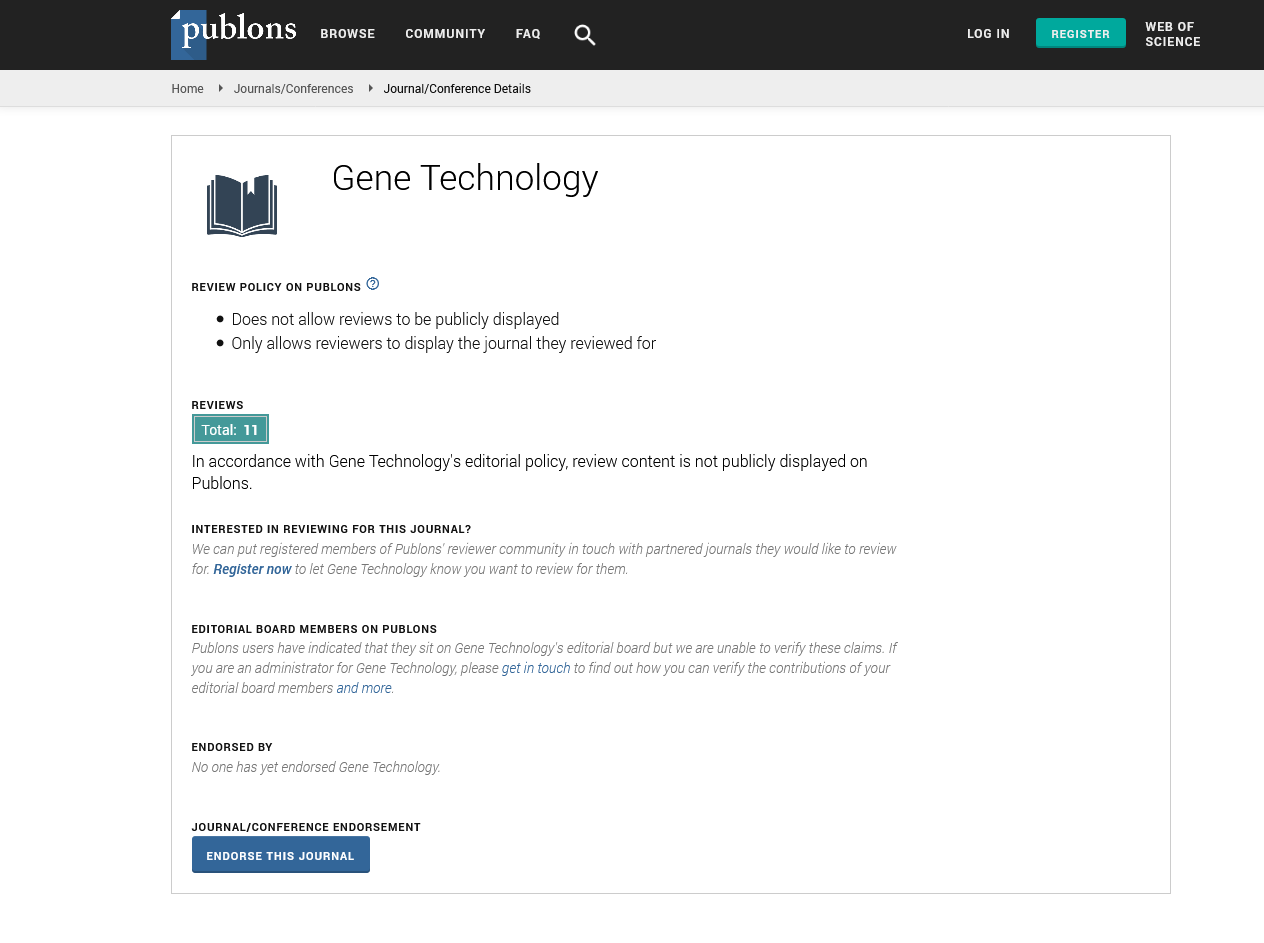Indexed In
- Academic Keys
- ResearchBible
- CiteFactor
- Access to Global Online Research in Agriculture (AGORA)
- RefSeek
- Hamdard University
- EBSCO A-Z
- OCLC- WorldCat
- Publons
- Euro Pub
- Google Scholar
Useful Links
Share This Page
Journal Flyer

Open Access Journals
- Agri and Aquaculture
- Biochemistry
- Bioinformatics & Systems Biology
- Business & Management
- Chemistry
- Clinical Sciences
- Engineering
- Food & Nutrition
- General Science
- Genetics & Molecular Biology
- Immunology & Microbiology
- Medical Sciences
- Neuroscience & Psychology
- Nursing & Health Care
- Pharmaceutical Sciences
Perspective - (2024) Volume 13, Issue 3
Advancing Gene Editing for Safer Treatments of Hematological Diseases
Lucas Martinez*Received: 30-Aug-2024, Manuscript No. RDT-24-28165; Editor assigned: 02-Sep-2024, Pre QC No. RDT-24-28165 (PQ); Reviewed: 16-Sep-2024, QC No. RDT-24-28165; Revised: 23-Sep-2024, Manuscript No. RDT-24-28165 (R); Published: 30-Sep-2024, DOI: 10.35248/2329-6682.24.13.291
Description
Gene editing technologies have made remarkable strides in recent years, providing the potential to treat genetic disorders, improve disease modeling and enhance our understanding of biological processes. One of the most potential aspects of gene editing is its application in human Hematopoietic Stem Cells (HSCs), the progenitors of blood cells, which could revolutionize treatments for hematological diseases such as leukemia, sickle cell anemia and thalassemia. Traditional gene editing approaches often provide on ex vivo culture, where stem cells are isolated, edited outside the body and then transplanted back into the patient. While effective in many cases, this process raises concerns about genotoxicity, the potential for harmful genetic changes that could lead to cancer or other adverse effects. Recent advances suggest that gene editing directly within living tissues, without the need for ex vivo culture, may provide a safer alternative by evading the genotoxic risks associated with traditional methods.
Ex vivo gene editing involves isolating hematopoietic stem cells from a patient, introducing the desired genetic modifications through methods like CRISPR-Cas9 and then expanding the edited cells before reintroducing them into the patient. While this approach has shown great potential in clinical trials, it carries a number of risks. The process of expanding stem cells in culture, particularly when combined with genetic manipulation, can inadvertently lead to mutations or genomic instability. This can increase the likelihood of genotoxicity, where the edited cells may acquire oncogenic mutations, potentially leading to tumorigenesis or other unwanted effects once reintegrated into the patient’s body.
The concept of gene editing without ex vivo culture represents a significant step forward in reducing the risks associated with traditional gene therapy methods. By directly editing hematopoietic stem cells in vivo, researchers are able to over the need for culture and expansion, which reduces the potential for genomic alterations that could occur during the editing and culturing process. This approach relies on delivering gene-editing tools, such as CRISPR-Cas9, directly into the patient’s body, where they can make targeted changes to the genome of stem cells within their native environment.
One of the primary advantages of in vivo gene editing is that it minimizes the exposure of edited cells to external conditions that could induce genomic instability. In traditional ex vivo methods, stem cells are subjected to various stressors during culture, such as changes in nutrient availability, oxygen levels and temperature, which can impact their genetic integrity. By editing cells directly within the body, researchers can ensure that the stem cells remain in their physiological context, maintaining their original genomic stability. Furthermore, this approach also eliminates the risk of immune rejection, as the edited cells are not exposed to foreign handling or manipulation, making the process more seamless and compatible with the patient’s immune system.
Another important benefit of in vivo gene editing is the potential for more precise and targeted modifications. Traditional ex vivo gene editing methods often rely on viral vectors or electroporation to introduce the editing tools into the target cells. These methods can sometimes result in off-target effects or the random insertion of genetic material, which can lead to unintended consequences. In contrast, in vivo editing can be guided more precisely to target specific genes or regions of the genome, minimizing the likelihood of off-target mutations and increasing the accuracy of the modifications. This targeted approach enhances the safety and efficacy of gene editing, particularly when working with sensitive cell types like HSCs.
In conclusion, the concept of gene editing without ex vivo culture represents a potential approach to overcoming the genotoxicity concerns associated with traditional gene-editing methods in human hematopoietic stem cells. By directly editing cells in vivo, this technique has the potential to provide a safer, more efficient and more targeted method for treating hematological diseases and other genetic disorders. While challenges remain in terms of delivery and safety, the progress made in this area marks a significant step forward in the field of gene therapy. As research continues to refine and optimize these techniques, in vivo gene editing could become a pillar of personalized medicine, providing new hope for patients with genetic conditions while minimizing the risks associated with existing methods.
Citation: Martinez L (2024). Advancing Gene Editing for Safer Treatments of Hematological Diseases. Gene Technol. 13:291.
Copyright: © 2024 Martinez L. This is an open-access article distributed under the terms of the Creative Commons Attribution License, which permits unrestricted use, distribution, and reproduction in any medium, provided the original author and source are credited.

